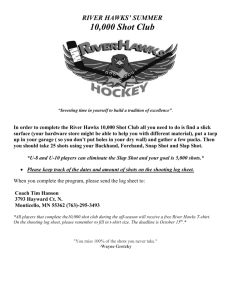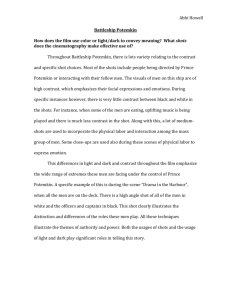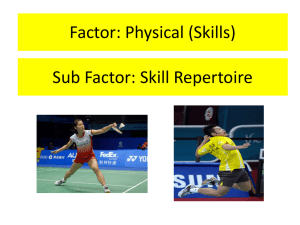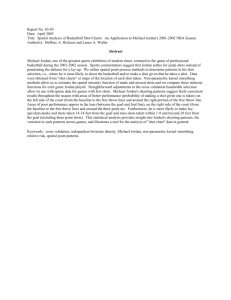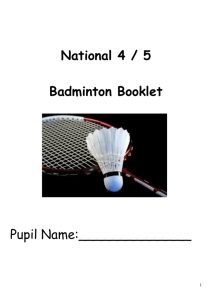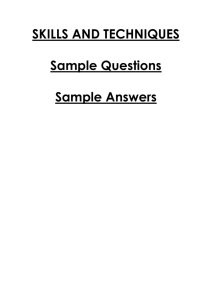Skills and Techniques Model Answer
advertisement
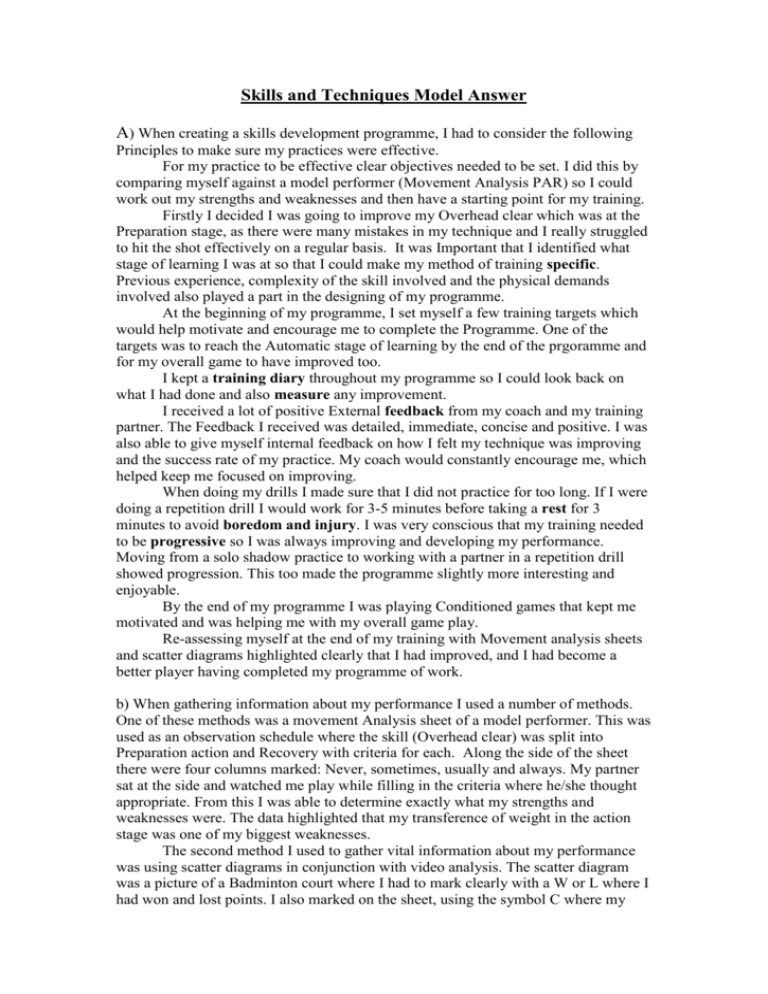
Skills and Techniques Model Answer A) When creating a skills development programme, I had to consider the following Principles to make sure my practices were effective. For my practice to be effective clear objectives needed to be set. I did this by comparing myself against a model performer (Movement Analysis PAR) so I could work out my strengths and weaknesses and then have a starting point for my training. Firstly I decided I was going to improve my Overhead clear which was at the Preparation stage, as there were many mistakes in my technique and I really struggled to hit the shot effectively on a regular basis. It was Important that I identified what stage of learning I was at so that I could make my method of training specific. Previous experience, complexity of the skill involved and the physical demands involved also played a part in the designing of my programme. At the beginning of my programme, I set myself a few training targets which would help motivate and encourage me to complete the Programme. One of the targets was to reach the Automatic stage of learning by the end of the prgoramme and for my overall game to have improved too. I kept a training diary throughout my programme so I could look back on what I had done and also measure any improvement. I received a lot of positive External feedback from my coach and my training partner. The Feedback I received was detailed, immediate, concise and positive. I was also able to give myself internal feedback on how I felt my technique was improving and the success rate of my practice. My coach would constantly encourage me, which helped keep me focused on improving. When doing my drills I made sure that I did not practice for too long. If I were doing a repetition drill I would work for 3-5 minutes before taking a rest for 3 minutes to avoid boredom and injury. I was very conscious that my training needed to be progressive so I was always improving and developing my performance. Moving from a solo shadow practice to working with a partner in a repetition drill showed progression. This too made the programme slightly more interesting and enjoyable. By the end of my programme I was playing Conditioned games that kept me motivated and was helping me with my overall game play. Re-assessing myself at the end of my training with Movement analysis sheets and scatter diagrams highlighted clearly that I had improved, and I had become a better player having completed my programme of work. b) When gathering information about my performance I used a number of methods. One of these methods was a movement Analysis sheet of a model performer. This was used as an observation schedule where the skill (Overhead clear) was split into Preparation action and Recovery with criteria for each. Along the side of the sheet there were four columns marked: Never, sometimes, usually and always. My partner sat at the side and watched me play while filling in the criteria where he/she thought appropriate. From this I was able to determine exactly what my strengths and weaknesses were. The data highlighted that my transference of weight in the action stage was one of my biggest weaknesses. The second method I used to gather vital information about my performance was using scatter diagrams in conjunction with video analysis. The scatter diagram was a picture of a Badminton court where I had to mark clearly with a W or L where I had won and lost points. I also marked on the sheet, using the symbol C where my partner has managed to continue the rally. This highlighted where I was playing my shots, where I won points and where I was losing points. I recorded my game initially using the video camera and then sat down and marked my scatter diagram. The reason I used video analysis was that I could rewind the footage if I missed a shot, pause it for more detail and use it compare at the end of my training programme. I found both these methods were easy to use and they provided me with a permanent record of what my strengths and weaknesses where for my overhead clear. Insert Diagram of movement analysis with PAR criteria Insert Diagram of a Scatter diagram c) The program of work I designed was over a period of six weeks. In the six weeks I carried out gradual build up of practices from a shadow and single feed practice then moving onto repetitive drills and routines. Within practices I also used targets (hoops) which were used for placement practice. Conditioned games full court and half court were used. Match results were recorded to monitor progress. I could judge if my clear was improving because I could see if it was able to push my opponent to the back of the court, putting them under pressure. WEEK1- After watching a model performer doing an overhead clear. I carried out a shadow practice. I spent roughly 10min on this practice going through different stages of the shot. Then I did single feed practice. Stood at back, partner fed 6 high accurate feeds. I played clear. Out at first 6, only 2 reached the back. After another 6, 4 reached back which was an improvement. Ended this practice with a Conditioned game, no smashes. Overhead clear was poor only reached mid Court. WEEK2- Started this practice with single feed practice again. This time 5 out of 6 reached back, an improvement, therefore I went on to play the shots moving from base and back. First 6 were poor, had another 6 got further back in court. Added in target to improve positioning, 3 shuttles out of 6 reached target, needs a bit more work. Again ended this practice with conditioned game, no smashes, shot was improving, pushing my opponent to the back more. WEEK3-Coped well with movement so I moved on to continuous feeds, first 6 shuttles only half were of high standard, others poor. Next six were still very varied. Kept practicing at this for bout 10 min and finally 4 out of 6 shuttles were reaching the back so decided to move onto a rally only playing clears. Clears were average didn’t challenge my opponent. Ended this practice with a target practice, positioning of shot is improving. WEEK4-Started this practice doing the same as last, playing rally, only clears. Spent 5 mins practicing, could see an improvement, clears were challenging opponent now. Decided to add a net shot into this situation. Feed clear, throw over net, I play net shot. This practice got me moving more. Found it difficult to get behind shuttle in time to play a good clear, therefore clears were poor. Finished this practice with conditioned game, shot was improving in game situation. WEEK5-Started this practice by doing the feed, clear, feed, net shot practice. Practiced for 10 mins and seemed to be improving, moving quicker and could reach shuttle in time to play accurate shot. Moved onto a drill practice playing a clear, partner plays a dropshot, I play left. I practiced this and seemed to become confident on this practice quite quick playing good overhead clears. To finish this practice we chose the same drill but after twice through we played point out, which made it more of a game situation. WEEK6- The sixth situation session was when we re-analysed my overhead clear, whilst playing a 15 min game, full court, against an opponent of the same ability. d) My whole performance has change because looking at the re-analysis sheets I can see that I now use a more variety of shots because I have more confidence and I tend to use attacking shots more eg smash. I can also tell I can cover the court better and can read my opponent better also. When looking at my score sheet towards the end of the unit my scores improved and I started winning more this suggests my overall performance has improved. By internal feedback I can tell I am more confident when playing and have much more motivation to win than previously. I can also tell my overhead clear is becoming more effective more often because in a game situation my overhead clear pushes my opponent to the back of the court putting them under pressure. To ensure that my progress continued I would set higher targets for my next training programme. I would continue to use pressure drills but make them more challenging and progress them on quicker. I would compare my results from the last programme and go back and refine any problems I had with my technique using the whole-part-whole method.


